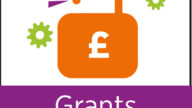Public misconceptions: Why we must do more to showcase the impact of charities
Tania Mason argues for greater visibility and communication of the sector’s achievements, calling on charities, regulators, and the media to do more to showcase their impact and correct damaging misconceptions.
Quite by chance, recently I stumbled across an episode from the Observer’s Slow Newscast podcast called ‘How to disappear’. I’d already listened to my regular string of podcasts and had a long drive ahead, so I decided to press play. It turned out to be a fascinating story of how the charity Missing People investigates the disappearance of individuals, and it was quite honestly riveting, not to mention emotive. Particularly the bit where two brothers who had lost contact for 40 years were reunited at Victoria rail station, thanks to the charity’s intervention.
As a charity sector journalist for over two decades and the co-author of a 326-page book about the sector (What Have Charities Ever Done for Us? – The Stories Behind the Headlines, published by Policy Press), I like to think I know a thing or two about UK charities. But I have to admit that I did not know that Missing People investigates missing person cases. I assumed it offered support to families and loved ones of those that are missing, but I was not aware that it tries to track people down and offers to reunite them. And if I didn’t know that you can bet that the vast majority of the Great British public also has no clue.
Public misconceptions of charities
It’s long been a bugbear of mine that the general population has such a poor awareness of charities’ work; how they operate, the challenges they face, and especially what they accomplish. It is the main reason why former Third Sector editor Stephen Cook and I wrote our book – to try to improve general knowledge of the sector among the wider population. The current vacuum of comprehension and understanding allows misinformation and distortion to flourish. We see this clearly in public surveys about charities.In one poll by nfpResearch from March this year, only 15% of the of 1,017 people surveyed knew that trustees are responsible and accountable for the actions of individual charities, including their direction and strategy. Just over a third thought that the Charity Commission is responsible and 21% believed that the government is responsible. And in the Charity Commission’s own public trust research from two years ago, only 20% of respondents said they would be more likely to trust a charity run by paid professionals, while 50% would put greater trust in a charity run by volunteers. Public perceptions of charities are so skewed as to be nonsensical – not to mention harmful to the causes they represent.
Tangible achievements
Such ignorance is made even more frustrating when we consider the incredible achievements of charities, such as those honoured at Civil Society Media’s annual Charity Awards. Take Mayhew, winner of this year’s Animals and Environment category, whose mass canine vaccination and neutering programme in Afghanistan has prevented the cruel culling of thousands of dogs, and meant that no human has died from dog-transmitted rabies in Kabul for two years. Or STADA – Standing Together Against Domestic Abuse – which has trained more than 6,000 NHS healthcare professionals to ask the right questions to uncover whether a patient is suffering from domestic abuse. In the last year alone, the charity’s Whole Health Project has identified and supported nearly 800 survivors. Or ChildLine, which has provided a lifeline to abused or troubled children and young people on more than six million occasions over its 39-year history.
Charity Commission intervention
So it was encouraging to hear David Holdsworth, the Charity Commission’s chief executive, tell the Charity Finance Group annual conference recently that the regulator plans to spend some of its budget uplift from the government on helping charities to better demonstrate their impact. He conceded that impact assessment and reporting is “really patchy across the sector” and said the commission planned to work with charities over the next couple of years in an effort to address this problem.
Holdsworth said: “It’s going to become increasingly important that we can make visible to the public, and reconnect with them, just what the sector does on a day-to-day basis.”
This is a welcome departure from the position espoused by the former chair of the Charity Commission, Baroness Stowell, who in 2018 told a parliamentary committee that it was not the Commission’s role to help the public understand charities better, and that it would not be putting resources into improving public understanding. I look forward to hearing what the Charity Commission’s next steps will be on this issue.
Every tool at our disposal
Charities do some excellent work: plugging gaps in public services; protecting our environment or our heritage; giving voice to the voiceless; campaigning against injustice; saving lives. We need to use every tool at our disposal to boost public and political understanding of the sector and the role it plays in society. At Civil Society Media, we send every Charity Award winner and highly commended charity a tailored press release that they can disseminate to their local media and other relevant constituents. Not all of them will need this, as bigger organisations will have their own media teams, but many smaller charities really value it. Whether it’s press releases, podcasts, TikTok or the annual return, we should always be looking for ways to show off just how vital our charity sector is.
Tania Mason is editor of Civil Society Media’s Governance & Leadership magazine, producer of the Trustee Exchange conference and co-author of What Have Charities Ever Done for Us? – The Stories Behind the Headlines, published by Policy Press.
Until Friday 15 August, you can get 15% off this title by using the code wht15. Order your copy here.


